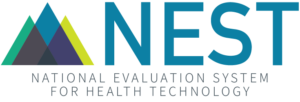NESTcc Establishes Active Surveillance Task Force
*The content below represents the composition of the NESTcc Active Surveillance Task Force at the time of its establishment. For an updated list of Task Force membership, please visit the NESTcc Active Surveillance webpage.
On December 13, 2018, the NESTcc Governing Committee approved the establishment of a small, multi-stakeholder Active Surveillance Task Force tasked with establishing a blueprint for leveraging NESTcc’s work to advance active surveillance and subsequently launch NESTcc’s first active surveillance projects. The Task Force will develop a blueprint by Spring 2019, and the first active surveillance projects will launch to demonstrate the feasibility of deploying active surveillance tools within the NESTcc Data Network.
Task Force membership includes key stakeholder representation from patients, clinicians, health systems, the US Food and Drug Administration (FDA), payers, and the medical device industry. The Task Force will also include members with expertise in patient privacy as related to “big data.” This diverse composition provides perspectives essential to building NESTcc’s capacity to support a successful active surveillance program.
Active Surveillance Task Force Membership
- Kathleen Blake, MD, MPH, American Medical Association
- Owen Faris, PhD, U.S. Food and Drug Administration (FDA)/Center for Devices and Radiological Health
- Kevin Haynes, PharmD, MSCE, HealthCore, Inc.
- Harlan Krumholz, MD, SM, Yale School of Medicine
- Brad Malin, PhD, Vanderbilt University
- Michelle McMurry-Heath, MD, PhD, Johnson & Johnson
- Bray Patrick-Lake, MFS, Duke Clinical Research Institute
- Frederic Resnic, MD, Lahey Health
NESTcc’s Active Surveillance Task Force will begin work in January 2019. Additional information on the background of this Task Force, including the US Food and Drug Administration’s November 2018 update to the Medical Device Safety Action Plan outlining how NESTcc will be leveraged to more quickly detect emerging safety signals through active surveillance, can be found here.
